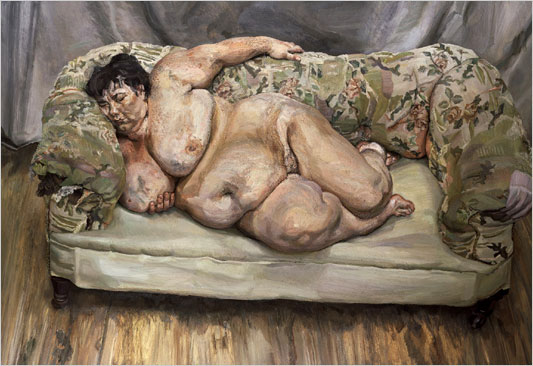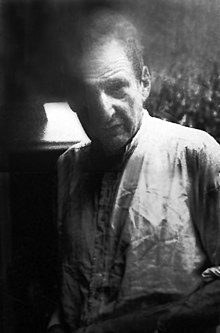English Art: Painting and sculpture in England from the 10th
century.
The Portrait painting started in the 15th
century and the landscape painting reached its splendor in the 19th
century with John Constable and J M W Turner. In the 20th century, two groups
such as Camden Town Group and the Bloomsbury Group accepted to modern
influences in painting and in sculpture.
In the 50s, the movement pop art began in
the UK and the artists of this time tried out with mixed and unusual media, such
as dead animals.
Medieval: 10th until 15th centuries
The painting and sculpture
of this time was religious and their international organization had a national
character. During the 13th
century, painting appeared with Henry III and declined in the 14th as
a result of the Wars of the Roses. The chronicler Matthew Paris was one of the
figures of this time.
Tudor and Elizabethan: 15th until 16th centuries
The Renaissance style started
with the sculptor Torrigiano. In this century, the reign of Henry VIII put an
end to church art. Painting, in the case of portrait painting, remained largely
through this influence. One of the exponents of this period was Hans Holbein,
who painted portraits of Henry's court. On the other hand, in Elizabeth's reign
English painters evolved a distinctive style in the portrait miniature.
17th century
English art was once again
revitalized by some foreign artists such as Peter Paul Rubens and Anthony van
Dyck. The 17th century portraiture was dominated by his baroque
elegance. William Dobson, who succeeded van Dyck as court painter to Charles I,
and Robert Walker, who painted portraits of Oliver Cromwell and other Puritan
leaders were one of the successors.
18th century
Independence English art was
obtained with great achievements in portraiture and landscape. Two outstanding
figures as Gainsborough and Reynolds have transformed portraiture. The subtlety
and refinement to their portraits, their images expressed the wealth and
confidence of the English society are the elements they captured in their
paintings. William Hogarth has
challenged the fashionable portraiture of the 18th century, who
painted faces and scenes of contemporary life with a vigorous and unapologetic
frankness.
The work foreign artists
such as Canaletto was established landscape painting in England. Richard Wilson,
a first British artist stood out at landscape, and
William Blake, the poet and etcher, was a unique figure and he established his own individual style to show a complex personal mythology.
William Blake, the poet and etcher, was a unique figure and he established his own individual style to show a complex personal mythology.
19th century
Painters such as Constable and Turner that they gave deepness and range
to landscape painting because it not only one of the most popular expressions
of English art. The English art dominated the Pre-Raphaelite movement. The arts
and crafts movement promoted a revival of crafts and good design in the 19th
century.
The French artists influenced English art in the end of the century such as Edgar Degas and the Impressionists.
The French artists influenced English art in the end of the century such as Edgar Degas and the Impressionists.
20th century
English artists introduced to post-Impressionism and Fauvism in 1910. In 1911 it was formed the
Camden town group to encourage artists that they brought a new sense of form and color foe the
description of scenes of everyday London life.
Between the primary and
secondary world war, the artists started to reflect a wide range of styles and
intentions. Artist such as Matthew Smith, who worked in a fauvist style. Stanley
Spencer tried to express a visionary apprehension of everyday life with the use
of detailed realism. Abstract art was evolved by Ben Nicholson; other artists such as Paul Nash, Ceri Richards, and Graham
Sutherland responded to surrealism. Henry Moore that he dominated English art was
influenced by the surrealism of the 20th century.
English art was became pluralistic after World War II. A
strong figurative tradition was continued, in very different styles by Francis Bacon, Lucian Freud, Frank
Auerbach, John Bratby, Keith Vaughan, etc.
Some famous artists from England are:
 Cecil Kennedy was born in Leyton (England) on 4th February, 1905
and he died on 1997, St Albans (England). He comes from a family of artists and
he is known as one of members of the English Contemporary School. He has painted
some portraits, although will be remembered for
his detailed paintings of flowers. Kennedy studied
art in London and began to exhibit his works. At the 24 years, he had introduce at the Royal Scottish
Academy and the Royal Hibernian Academy and then he went on to exhibit at the
Royal Academy and also in the provinces.
Cecil Kennedy was born in Leyton (England) on 4th February, 1905
and he died on 1997, St Albans (England). He comes from a family of artists and
he is known as one of members of the English Contemporary School. He has painted
some portraits, although will be remembered for
his detailed paintings of flowers. Kennedy studied
art in London and began to exhibit his works. At the 24 years, he had introduce at the Royal Scottish
Academy and the Royal Hibernian Academy and then he went on to exhibit at the
Royal Academy and also in the provinces.In 1930 he married with Winifred Aves. For him, she was a major influence and inspiration to Kennedy. During a long time ago, they worked together as a creative team considering that she had the skill to create the beautiful floral arrangements that Kennedy painted.
In 1944 Kennedy focused in Antwerp and here where was that he familiarized with the Dutch and Flemish Old Master flower paintings. He knew many friends Flemish painters and so this interaction he changed Kennedy's painting style and technique.
Cecil Kennedy is an renowned prestige artist and is the finest British painter of flowers of the 20th Century. In his work, he applies modern exotic miscellaneous flowers with traditional English flowers and herbages besides plant species. He had much knowledge about flowers and his use of all white flower arrangements expressed his awareness of 20th Century horticultural trends such as Vita Sackville-West's White Garden at Sissinghurst. His work is famous for its detail and artful composition.
Cecil Kennedy's piece of art
Beautiful Victorian oil painting "Still life Flowers"
"We have never heard
before about Cecil Kennedy. The flowers of the painting seem very exotic
and
unknown to us, it brings memories when we were children, it is very
melancholic because of the dark and dull colors of the piece of art.
The outlining is so delicate, that we might think those flowers are
real. It
gives us the impression that the landscape is not important, but the
object is."
Opinion by Giovanna Sepúlveda and Katherine Canales.
Lucian Freud
Lucian
Freud He was born on December 8th,
1922, in Berlin and he died on July 21st,
2011. He and his family moved to London in 1933 to escape the Nazi Party and he
got British Nationality.
Freud was a figurative
artist who his style developed over time. In his youth he was influenced by
Surrealism. He was called The Ingres of Existentialism and also he has been
called the last great figurative painter.
In his paintings, he painted people either family and friends but also painted flesh. He was well known for painting nudes and he did not seek to praise and his self portraits were as uncompromising as his portraits of other people.
In his paintings, he painted people either family and friends but also painted flesh. He was well known for painting nudes and he did not seek to praise and his self portraits were as uncompromising as his portraits of other people.
His watchman play a part in the painting of a portrait considering that Freud was reluctant to paint people he didn't know. He was a very fine draughtsman and latterly he became renowned for how he manipulated oil on canvas.
Lucian Freud's piece of art
"The Benefits Supervisor Sleeping"
 This
painting is an oil on canvas that represents an obese
and naked woman posing on a sofa .
This
painting is an oil on canvas that represents an obese
and naked woman posing on a sofa .
It is a portrait of Sue Tilley that weigh about 127 kg. Freud explain that her body does not have muscle and she has a different texture.
Graham Sutherland
Graham Vivian Sutherland was born on August, 24th in 1903
in London and he died on February 17th, 1980 in London. He
was a English painter and he was known for his Surrealistic landscapes.
Sutherland studied art at Epsom College in London. He stood out printmaking, and he was teacher at the Chelsea School of Art. As an engraver, he took inspiration in the romantic painter Samuel Palmer and he was influenced by William Blake, Paul Nash, Henry Moore, and Pablo Picasso. His first work had the characteristic by an exacting representationalism that developed in the Surrealism. During 1940 to 1945 he was an official war artist and his paintings give a factual and evocative record of desolation.
Sutherland started with the Crucifixion for St. Matthew’s Church in Northampton. This painting is one of the most important religious paintings of the 20th century. In his last work he added anthropomorphic insect and plant forms which he converted into powerful and frightening totemic images. The hard and spiky shapes of fossils gave the theme of his large Origins of the Land.
Also, Sutherland was known for his expressionistic and penetrating portraits. His painting of the writer Somerset Maugham was the first of an impressive series and he also designed an enormous tapestry for the new Coventry cathedral.
Graham Sutherland's pieces of art
This painting shows a delicate creature that it is the invention of
Sutherland’s imagination. This creature would be a kind of an insect or a
crustacean. The work of Alberto Giacometti and Francis Bacon in relation with
this picture was the frontality of its pose, gaze and the simplicity. The
interpretations of this creatures were seen as threatening or pessimistic.
"The origins of
the land"
This painting
was made for the comparison with the history of the land of Britain created by
its mineral wealth. In the painting, at the top the painting, the earth is
aflame while underneath strange root-like forms suggest the promise of life.
"In this painting, we implied the beginning of England capturing it with different shapes and colors that gives the paint. The shapes are unique and each one represents a different meaning. In addition, we had never heard about this artist and it caught our attention in the way that it represents the land of the angles."
Opinion by Alexandra Rojas and Mario Vega
For more information about the history of British art visit:
http://www.historyworld.net/wrldhis/PlainTextHistories.asp?groupid=3438&HistoryID=ad13>rack=pthc
For more information about Lucian Freud visit:
http://www.elcultural.es/version_papel/SEMBLANZAS/11037/Lucian_Freud/





No hay comentarios:
Publicar un comentario